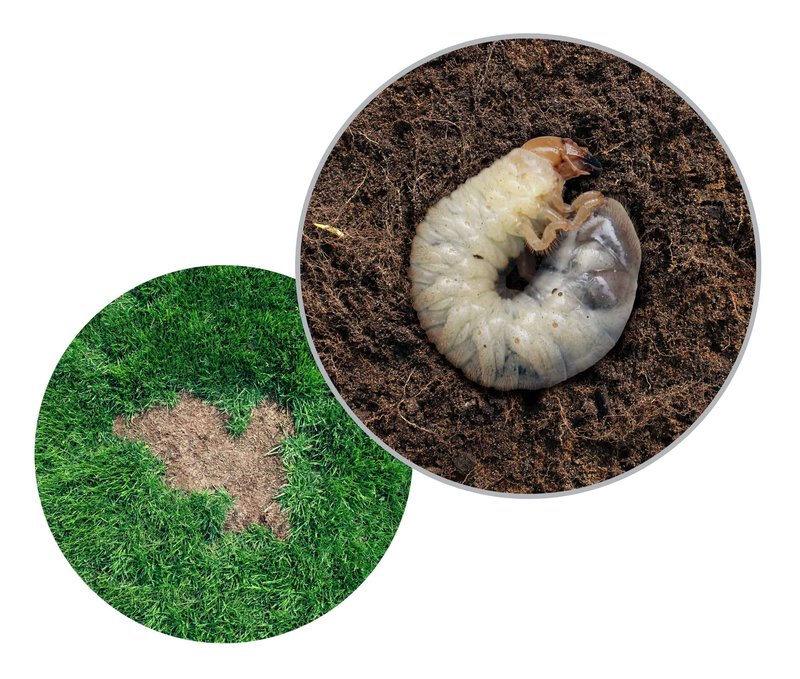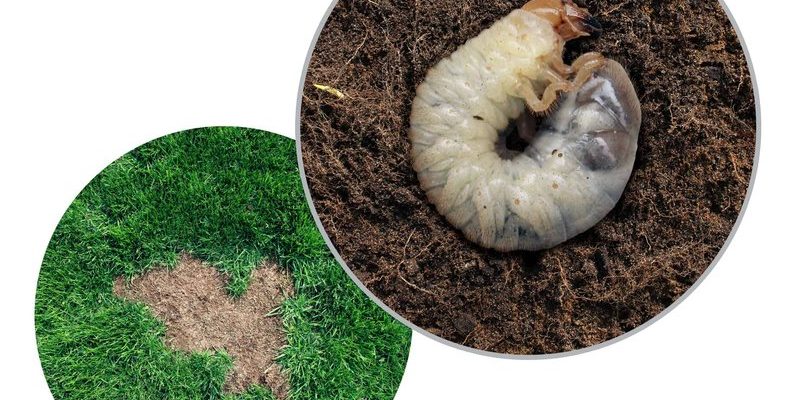
Grub worms are actually the larvae of various beetles, commonly the Japanese beetle, and they thrive underground, munching on grass roots. The idea of having worms in your lawn might not sound alarming at first, but trust me; they can multiply quickly. Let’s dive into what these lawn invaders are all about and how to identify and manage them.
What Are Grub Worms?
Grub worms are the larval stage of certain beetles, primarily the Japanese beetle, the European chafer, and the June bug. These larvae are typically white, C-shaped, and about one inch long when fully grown. They prefer to live just beneath the surface of the soil, feeding on the roots of grass and other plants. If you’ve ever pulled up a patch of grass and felt it come away easily, there might be grubs at work below.
You might be wondering why these little guys are such a big deal. Well, if left unchecked, grub worms can destroy your lawn. They not only eat the roots but also attract other pests like raccoons, skunks, and birds that dig up your yard in search of a tasty snack.
How to Identify Grub Worms
Recognizing grub worms in your lawn can be a bit tricky, especially since they spend most of their time underground. Here are some telltale signs to watch for:
- Brown patches: Look for irregular patches of dead or brown grass. This is often the first sign that grubs are causing issues.
- Easy to pull up grass: If your grass comes up easily when you tug on it, that could mean the roots are damaged from grub activity.
- Increased animal activity: If you notice more birds or animals digging in your yard, they might be searching for grubs.
If you suspect you have a grub problem, you can also do a simple check: Remove a square foot of sod and inspect the soil for grubs. If you find more than 10 grubs in that area, it’s time to take action.
Life Cycle of Grub Worms
Understanding the life cycle of grub worms can help you manage them effectively. Typically, the life cycle begins in the spring when adult beetles emerge from the soil. After mating, the female beetles lay their eggs in the ground. Once the eggs hatch, the tiny grubs begin to feed on the roots of various grasses.
These larvae grow over the summer and start to burrow deeper into the soil as temperatures cool in the fall. By winter, they enter a dormant state. In spring, they pupate and eventually transform into adult beetles, and the cycle begins anew. Knowing this cycle is crucial for timing your preventive measures against them.
Preventing Grub Worms
Prevention is always better than cure, especially when it comes to invasive pests like grub worms. Here are some effective strategies to help keep them at bay:
- Healthy lawn practices: A well-maintained lawn can naturally resist grubs. Regular watering, mowing at the right height, and fertilizing can strengthen your grass.
- Beneficial nematodes: These microscopic worms are a natural predator to grubs. Introducing them into your lawn can help control grub populations.
- Regular inspections: Keep an eye on your lawn throughout the growing season. Early detection can save you a lot of headaches later.
Implementing these practices helps create an environment that’s less appealing to beetles looking to lay eggs in your lawn.
Treating Grub Worm Infestations
If you’ve found a grub worm problem in your yard, don’t fret; there are several treatment options available. Here’s how you can address it:
1. **Insecticides:** There are various chemical products designed to treat grub infestations. Look for those containing *imidacloprid* or *chlorantraniliprole*. Always follow the instructions and consider the environmental impact when using chemicals.
2. **Natural remedies:** If you prefer a more eco-friendly approach, treatments with beneficial nematodes or milky spore disease can help control grub populations naturally.
3. **Cultural practices:** Adjusting your lawn care routine can also help, such as aerating your lawn to promote healthy root growth and keeping your lawn mowed to a suitable height.
Timing is critical with any treatment. Early summer is often the best time to tackle grubs before they reach maturity and start a new life cycle.
Grub worms might be small, but they can lead to big problems for your lawn. By understanding what they are, how to identify them, and the life cycle they follow, you can arm yourself with the knowledge needed to prevent and treat infestations. Using healthy lawn practices and keeping an eye on your yard can go a long way toward maintaining a beautiful, green space.
Don’t underestimate the importance of early detection and proactive measures. With some attention and care, you can keep your lawn free from these pesky invaders and enjoy a lush, thriving green space all year round. Now go ahead and give your lawn the love it deserves!

